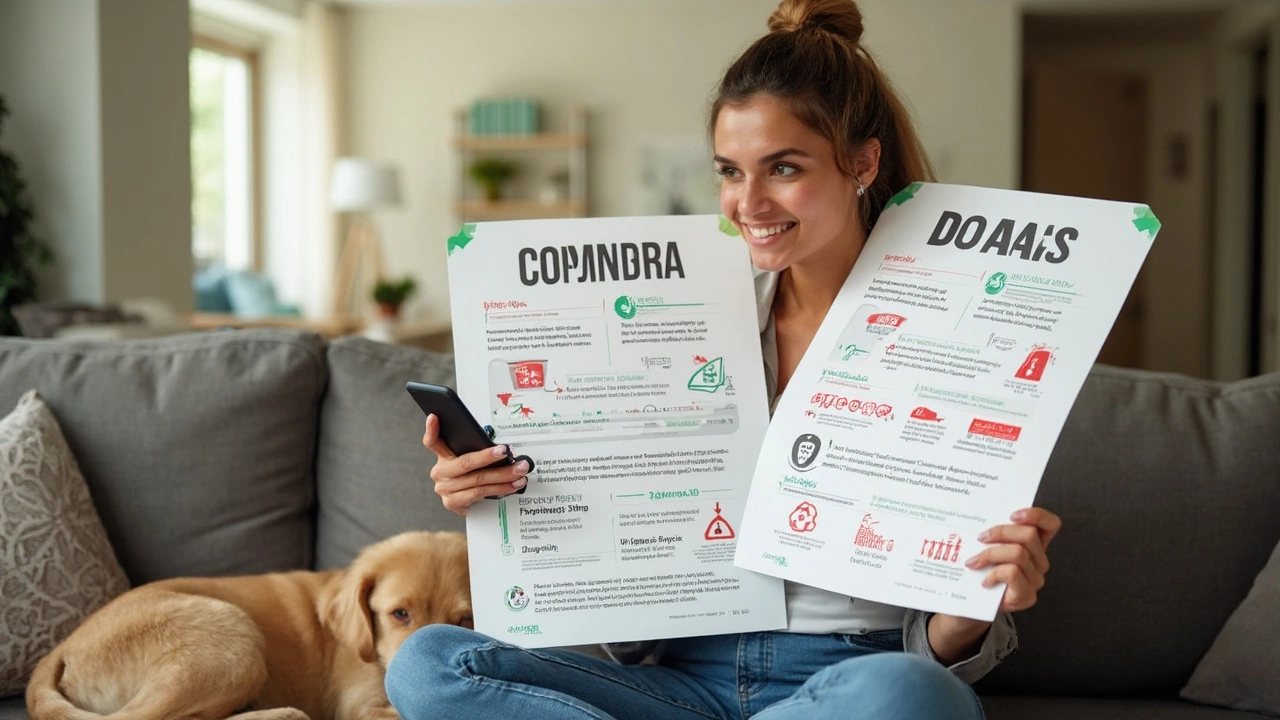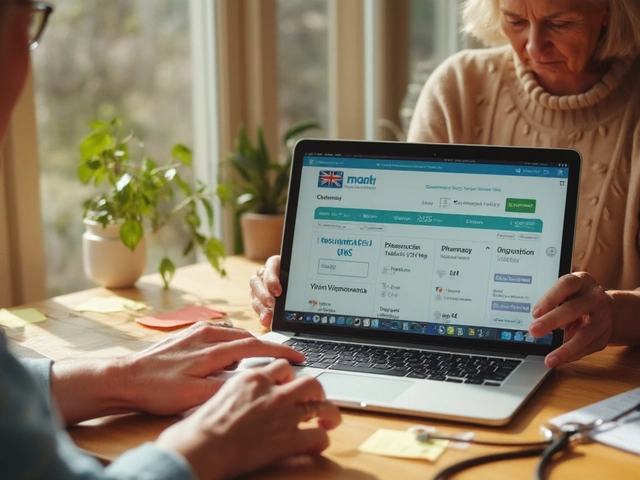Breaking Down Dosing Schedules: Simplicity vs. Structure
If you’re on blood thinners, you already know—timing is everything. Coumadin (that’s warfarin, in formal medical speak) plays by old-school rules. It usually means a once-daily dose, but there’s no one-size-fits-all: your amount changes based on frequent blood tests. It’s common for your doctor to tweak your dose after every INR result—sometimes bumping it up, sometimes pulling it back. These changes can happen weekly, even daily, until you’re stable. Even then, things like a new prescription or a wild day at the salad bar might mess with your dose. Talk about a moving target.
DOACs, or Direct Oral Anticoagulants—think of apixaban (Eliquis), rivaroxaban (Xarelto), dabigatran (Pradaxa), and edoxaban (Savaysa)—launched a new era of predictability. Most DOACs have a set dose recommended for age and kidney function, and they almost never change after you start. Apixaban is usually twice a day, rivaroxaban is typically once daily (with food), dabigatran is twice a day, and edoxaban is once daily. No see-sawing doses, no waiting on a late INR result to find out what to take tonight. For many, it feels less like a chemistry experiment, more like a regular routine.
But don’t think predictable dosing means you can go rogue. With DOACs, missing even one dose can weaken your protection against clots. Warfarin, thanks to its slow buildup and breakdown, gives you a little more grace on this (though missing doses is obviously risky for either). Make a mistake on DOACs and your risk bounces quicker.
Here’s how dose routines stack up in a quick glance:
| Medication | Dosing Frequency | Need for Adjustments |
|---|---|---|
| Warfarin (Coumadin) | Daily (variable dose) | Frequent, based on INR |
| Apixaban (Eliquis) | Twice daily (fixed dose) | Rare (mainly for kidney issues) |
| Rivaroxaban (Xarelto) | Once daily (with food) | Rare |
| Dabigatran (Pradaxa) | Twice daily (fixed dose) | Rare (mostly for kidney issues) |
| Edoxaban (Savaysa) | Once daily (fixed dose) | Rare |
For folks with busy lives, travel, or unpredictable meal schedules, DOACs often win in the simplicity contest. Warfarin demands flexibility and frequent tracking, especially early on, which can feel like having a part-time job just to avoid clots. If you want less fuss with morning or night routines, ask your healthcare provider if you’re a candidate for switching.
Diet Restrictions: Lettuce, Vitamin K, and Nightmares at the Grocery Store
This is where warfarin can really drive people nuts. Its effectiveness hinges on your body’s relationship with vitamin K—yep, the vitamin hiding in spinach, kale, and even those sneaky spring rolls. Too much vitamin K? Your INR may crash, clot risk goes up. Not enough? Risk of bleeding. Most people don’t want to do fine-tuned math every time they eat sushi or a salad.
Some Seattleites have told me they feel like they have to “break up with salads” after starting warfarin. Green veggies, green tea, even certain nutritional supplements require a mental handshake with your calendar, and, at minimum, a chat with your medical team. To keep your INR steady, you have to eat about the same amount of vitamin K every week. “Don’t go all-in on kale smoothies one week and skip greens the next,” my buddy’s pharmacist used to warn.
DOACs are almost the exact opposite story—vitamin K doesn’t affect their blood-thinning action. You can eat what you want (well, within reason; see the fine print about interactions, like grapefruit or certain herbal teas, but it’s way looser). You get back your salad bowl and a lot of your sanity. For many, this is an instant dealmaker.
But, while DOACs clear away the scary math on vitamin K, it’s smart to mention they don’t completely free you from the desk of dietary concerns. There are still some interactions, mostly with high-dose supplements or non-prescription meds, but these are fewer and easier to manage compared to the dietary tightrope of warfarin.
If you’re a home chef or a Seattle foodie (I mean, who isn’t?), DOACs offer way more culinary freedom. But if you already have a regular, balanced intake of vitamin K and don’t want to switch meds, warfarin is still workable—it just takes planning and open conversation with your healthcare provider.

INR Monitoring: Freedom or Frequent Flyers?
Here’s where you see the real split. Warfarin stays effective only when your INR (International Normalized Ratio—a fancy term for how fast your blood clots) stays between a needle-thin range, usually 2.0–3.0. Too low? You might throw a clot. Too high? Freak accidents like nosebleeds or worse. To keep tabs on this, warfarin users start out with weekly INR checks, which can lighten up to once a month if you’re stable. A lot of patients get to know their local blood draw nurse by name.
INR tests can be done at labs or at home (if you shell out for a special device—which, by the way, might not always be covered by insurance). Results take hours or a day, and any change in diet, a new prescription, or random illness means… you guessed it, back for another INR.
DOACs have NO routine INR requirement. You start them, you keep up with your scheduled doses, and barring any big changes in kidney or liver function, you simply pop the pills and see your doc once or twice a year for check-ins. That’s huge for anyone who hates needles, has a busy job, travels, or just prefers a life a little less medicalized. People often say it’s one of the most liberating things about switching from warfarin to a DOAC—no more living your life around lab appointments.
But don’t get too comfortable: you’ll still have occasional blood work to check kidney and liver function, especially if your health status changes. These check-ins are yearly or every few months instead of every week, and rarely (if ever) will the results affect your daily dose. That’s a major plus if you want a low-maintenance medication.
Quick Fact: A large real-world study found that around 30% of people on warfarin miss their target INR at least once every three months. DOACs, by sidestepping this challenge, can offer more stable protection with less hassle—especially for folks who find themselves playing calendar Tetris with their blood tests.
What Should Drive Your Choice? Tips, Facts, and Misconceptions
So which anticoagulant wins the day? Like most things in life, it depends on your needs, your other health conditions, and what matters most to you. Here are some things most people never hear (but should) before making a pick:
- Cost isn’t equal. Warfarin’s old-school—and cheap. DOACs are brand-name meds and the price tag can be intimidating, especially if you’re uninsured or your insurance plays games. There are patient-assistance programs, but checking coverage should be one of your first steps if finances are a concern.
- If you have mechanical heart valves or severe kidney issues, you might not qualify for DOACs. Warfarin is still the gold standard here—not just because it works, but because the newer drugs haven’t been fully studied for every use.
- Worried about emergencies or surgery? Warfarin can be reversed quickly, but so can most DOACs now (they used to lag behind in antidotes, but that’s changing fast). Always ask about reversal options if this matters to you.
- Side effects differ. Some patients on DOACs report less bruising and more predictable periods than with warfarin, but others might feel stomach issues, especially with dabigatran. It’s highly individual—don’t be afraid to push for a switch if you feel lousy on one option.
- Got busy travel plans, shift work, or simply hate the clinic? DOACs let you hit the road without scheduling your trip around lab visits.
Here’s a quick comparison table that brings all these details together:
| Factor | Warfarin (Coumadin) | DOACs |
|---|---|---|
| Diet Restrictions | Strict (vitamin K) | Minimal |
| Monitoring | Frequent (INR) | Rare (kidney/liver checks) |
| Dosing Schedule | Variable, adjusted often | Fixed, rarely changed |
| Drug Interactions | Many | Fewer |
| Cost | Low | High (insurance matters) |
| Good For | Mechanical valves, severe kidney disease | Stable routine, travel, less monitoring |
One thing’s clear—there’s no trophy winner for every single person. Some want the routine and inexpensive cost of warfarin, especially if they’re pros at planning meals and don’t mind labs. Others crave less hassle and want to throw every superfood back on their plate, pointing straight at DOACs. Still weighing your options? Check out a detailed guide to coumadin alternatives if you want to see more pros, cons, and up-to-the-minute choices getting real attention right now.
The best substitute for warfarin isn’t just the one with the newest ads or flashiest science. It’s the one that fits your actual everyday life—your food, your work, your freedom, your health goals. Talk to your doctor and don’t be shy about your must-haves and dealbreakers. Your blood is pretty important stuff—don’t let anyone talk you into what doesn’t fit you best.






Really appreciated the detailed side-by-side tables in this post! 😊 It made understanding the differences between Coumadin and DOACs actually manageable without feeling overwhelmed by jargon.
That being said, I’m curious about how the diet restrictions for warfarin can affect daily life long-term? Like, is it really as limiting as it sounds?
Would love to hear from anyone who’s been on either medication how they handle social eating or unexpected meals.
Thanks for breaking this down in such a neighborly way. It’s definitely less intimidating than a typical medical article.
July 17Kim and Lin